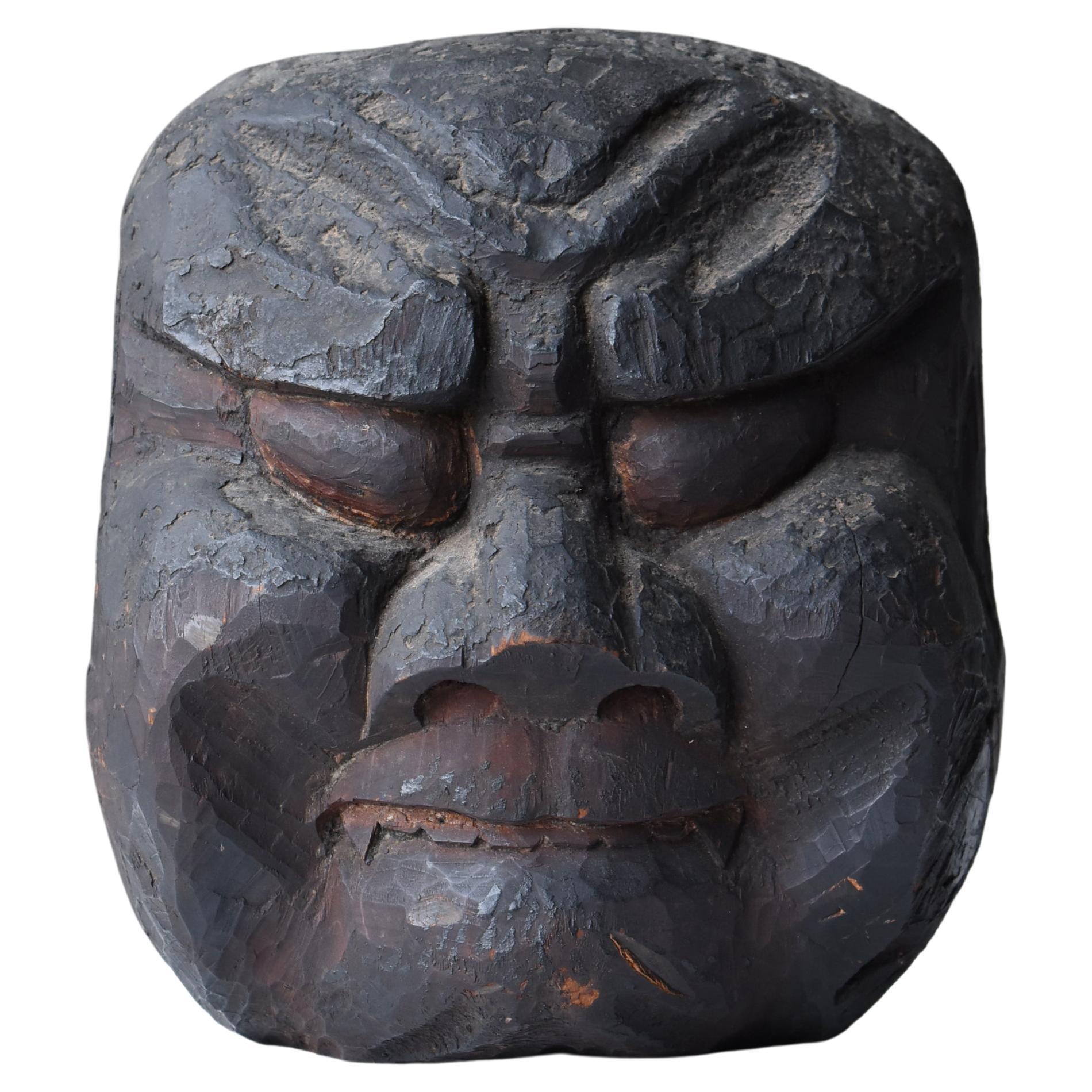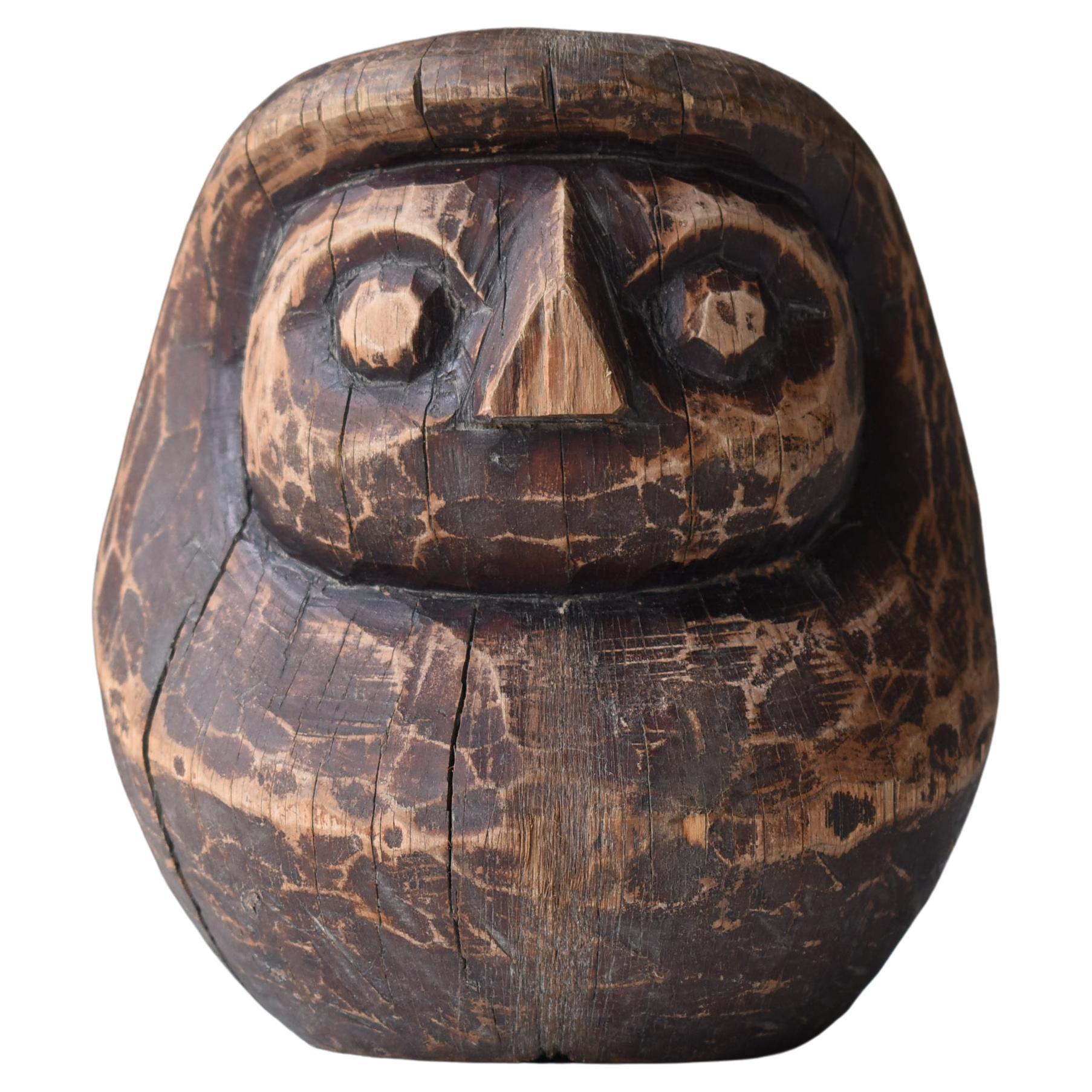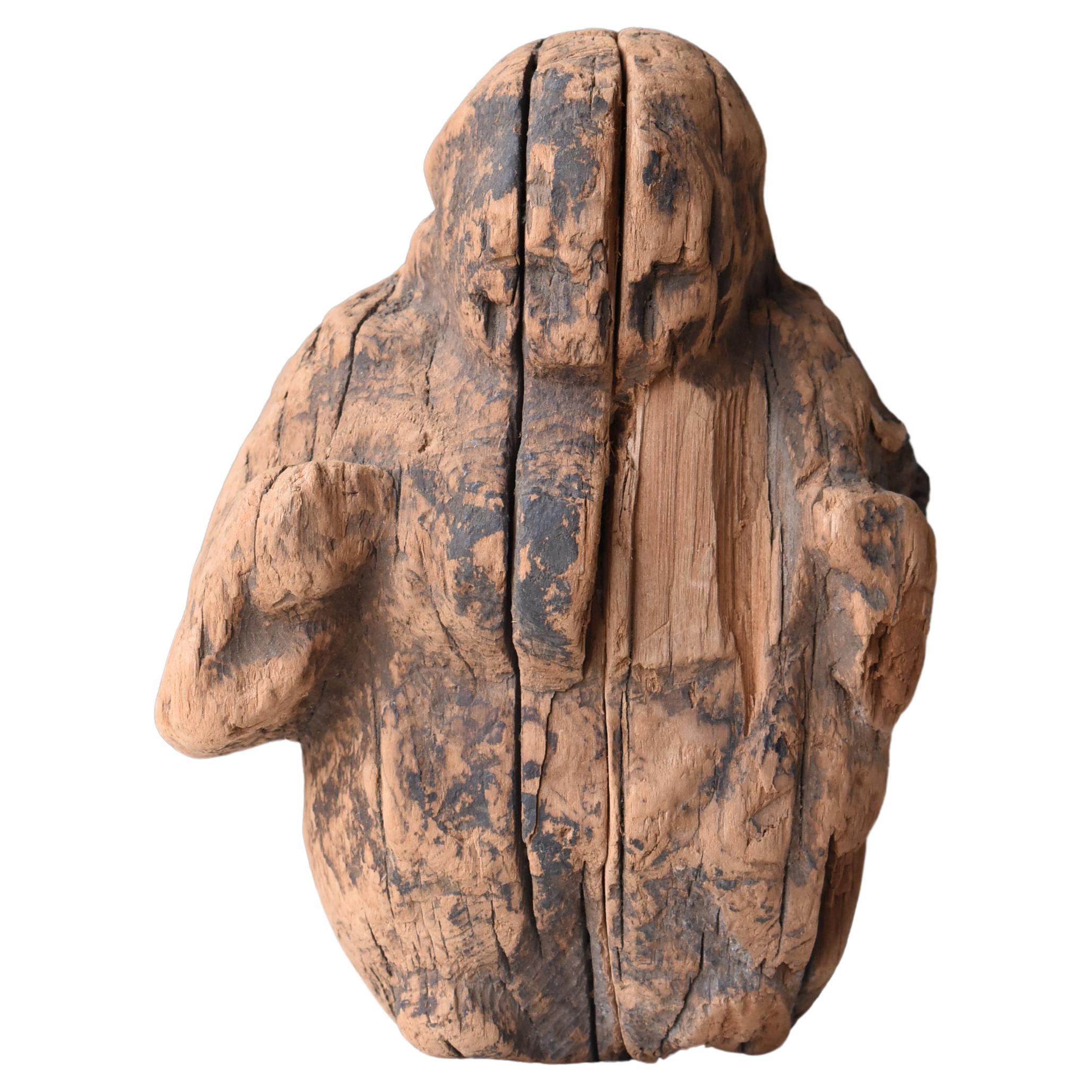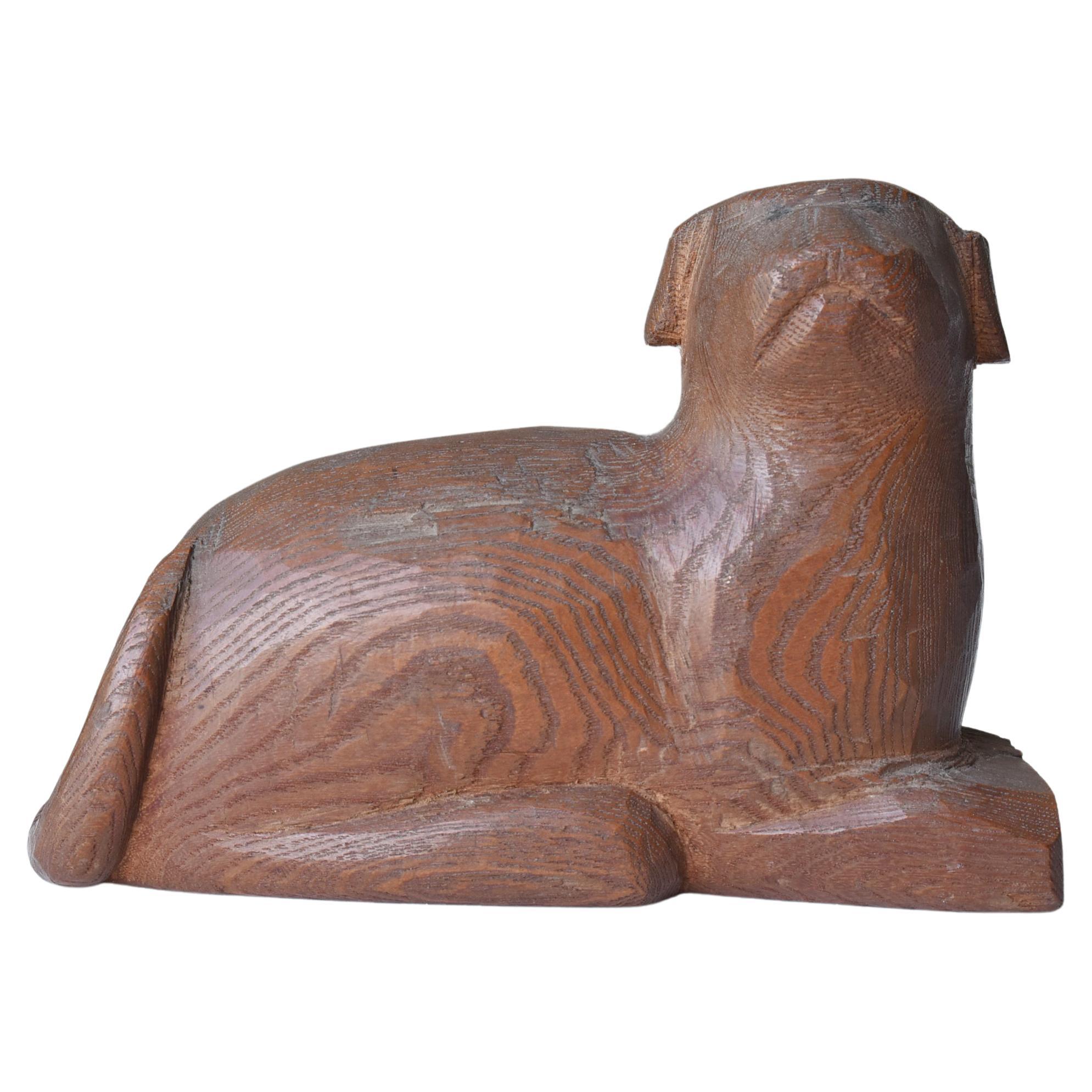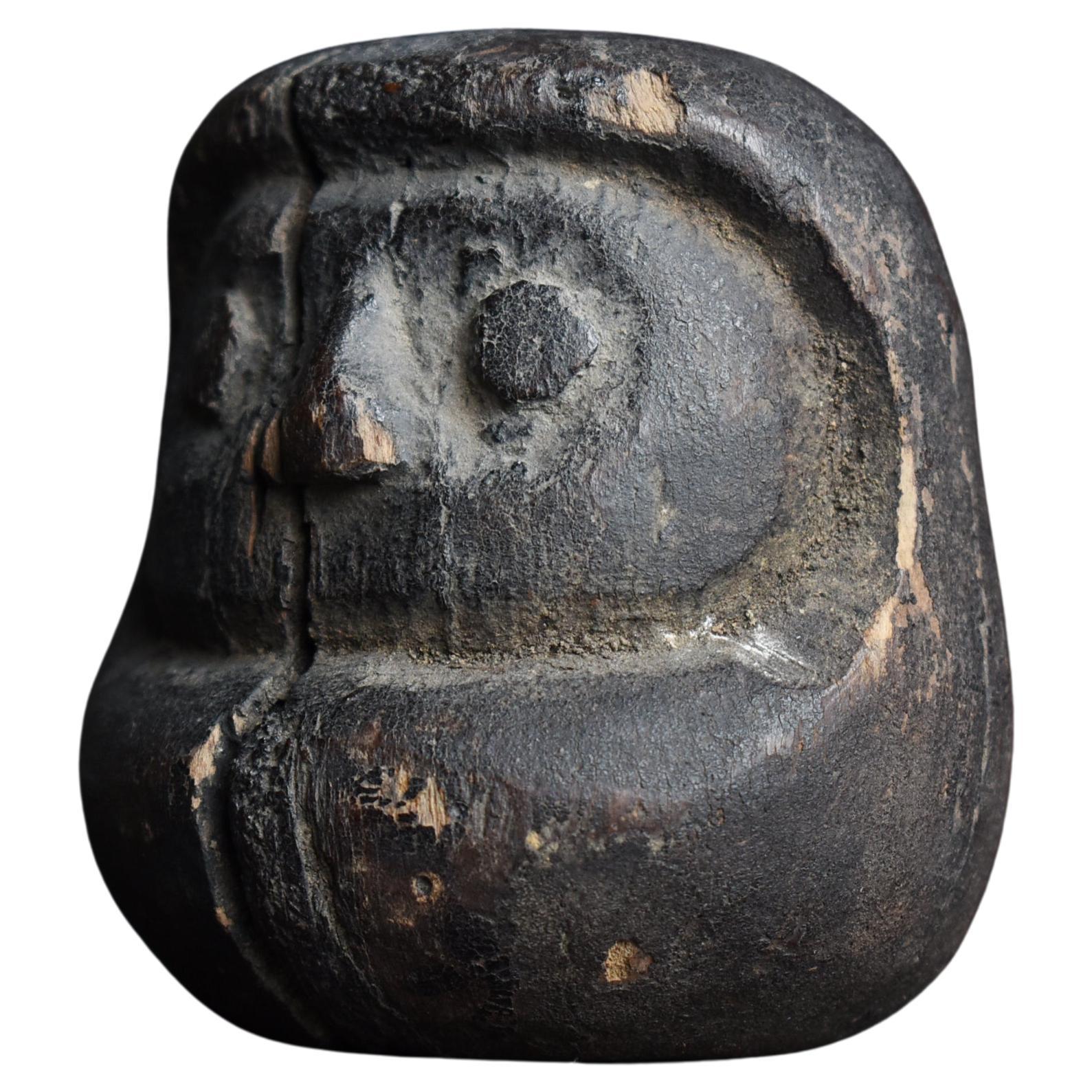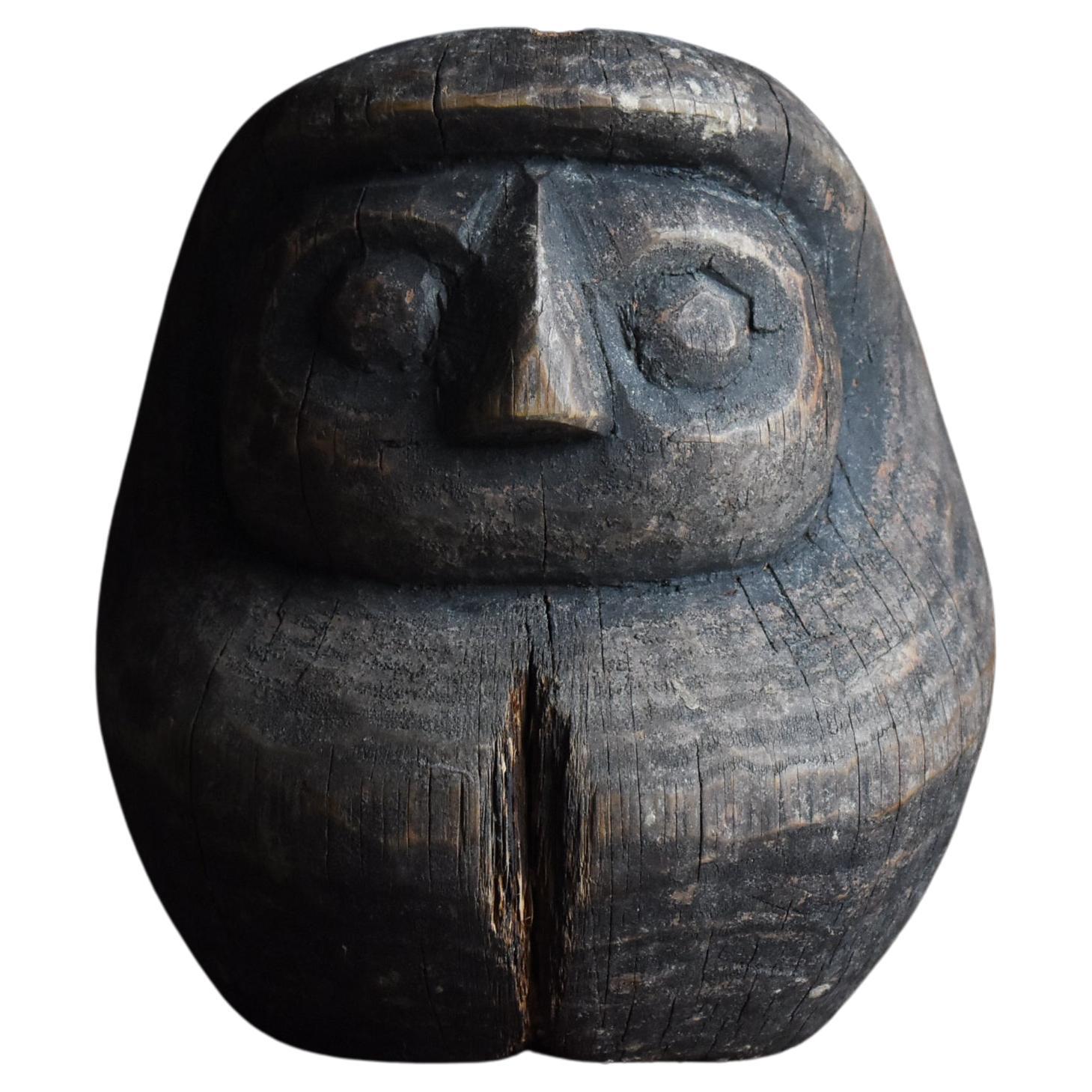Items Similar to Antique Japanese Mingei Yokogi
Want more images or videos?
Request additional images or videos from the seller
1 of 10
Antique Japanese Mingei Yokogi
About the Item
Antique Japanese Yokogi, a fish shaped fulcrum for the pot hook assembly over the hearth, a naively carved Tai (Sea Bream) with large head pierced for the hooked pole and the large tail pointed upward with a metal loop for the cord attachment, incised carving for facial details and scales, encrusted patina from use. Wood storage box made of hinoki.
Excellent condition.
5-7/8 in. high x 14-3/4 in. long x 4 in. wide.
Weight: 4 lbs. 4 oz.
Late Edo, Circa 1800.
Published in a Japanese newspaper in 1964 (article and translation available).
Provenance:
with Kingo Kondo, Kyoto 1964
Ken Domon, Tokyo
For a similar example see: Robert Moes, Mingei: Japanese Folk Art from the Brooklyn Museum Collection, #54 pp. 100-101. With the informative following information:
“Tai (sea bream, red snapper), especially the ones caught in certain parts of the Japan Sea, are among the most delicious fish in the world and make the best sashimi (sliced raw fish). Though expensive, tai is extremely popular in Japan. Tai is pronounced the same as the last syllable of the word medetai, which means “happy, propitious, auspicious”. Therefore, the tai fish became a symbol of happiness and is served at all felicitous occasions. Ebisu, one of the Shichifukujin. The Seven Gods of Good Fortune, always holds a tai under one arm and a fishing pole in the other. Ebisu is the God of Daily Food and patron deity of fisherman.
The tai is also associated with the Tanabata Festival, one of Japan’s most popular annual celebrations. On the seventh night of the seventh month, a huge float in the shape of a tai is pulled through the streets of many Japanese towns. The Tai float symbolizes the happiness of the event; the only night during the year when the Weaver (the star Vega) and her husband, The Herdsman (the star Altair), are allowed to meet (the two stars are in conjunction in the Milky Way that night). The story goes that the Weaver’s father, the Lord of Heaven, forbade her to join her husband more than one night a year.
A pothook-adjuster is usually carved in some fanciful form having auspicious and protective symbolism. In addition to the felicitous symbolism of the tai, a fish-shaped yokogi symbolizes the presence of water and magically prevents the fire in the hearth from starting a conflagration and destroying the house. Beyond the special symbolism of the tai, fish in general are considered felicitous because they seem happy in their element, swimming merrily in the water, unaware of mankind’s problems.”
- Dimensions:Height: 5.88 in (14.94 cm)Width: 14.75 in (37.47 cm)Depth: 4 in (10.16 cm)
- Style:Edo (Of the Period)
- Materials and Techniques:
- Place of Origin:
- Period:
- Date of Manufacture:Late Edo, circa 1800
- Condition:Wear consistent with age and use.
- Seller Location:Point Richmond, CA
- Reference Number:
About the Seller
4.9
Platinum Seller
These expertly vetted sellers are 1stDibs' most experienced sellers and are rated highest by our customers.
Established in 1999
1stDibs seller since 2015
607 sales on 1stDibs
Typical response time: 2 hours
- ShippingRetrieving quote...Ships From: Palm Springs, CA
- Return PolicyA return for this item may be initiated within 7 days of delivery.
More From This SellerView All
- Japanese Wood figure of JizoLocated in Point Richmond, CAJapanese Wood figure of Jizo, Edo period, circa 1800. Japanese mingei-style wood figural carving of Jizo Bosatsu, (Ksitigarbha Bodhisattva), the p...Category
Antique Early 1800s Japanese Edo Sculptures and Carvings
MaterialsWood
- Japanese Boy's day display suit of armorLocated in Point Richmond, CAAntique Japanese miniature model of a suit of armor made for the Boy’s day display. Constructed of a lacquered paper cuirass, upper arm guar...Category
Antique 1850s Japanese Edo Sculptures and Carvings
MaterialsTextile, Wood, Lacquer, Paper
- Antique Japanese Buddhist Sculpture of Kannon-BosatsuLocated in Point Richmond, CAJapanese Buddhist assembled wood sculpture of Kannon-Bosatsu (Avalokitesvara), the God of Compassion, standing male figure with abundant cloak draper...Category
Antique 16th Century Japanese Other Sculptures and Carvings
MaterialsGold Leaf
- Japanese Takeda Hina Ningyo, of a pair of seated ministersLocated in Point Richmond, CAJapanese Takeda Hina Ningyo, of a pair of seated ministers for the Girl’s day display, each costumed in matching brocades characteristics the house of Takeda, supported on lacquered ...Category
Antique 1820s Japanese Edo Sculptures and Carvings
MaterialsFabric, Wood
- Japanese Lion Gion Festival Dance Mask, Lacquered Wood, Late Edo periodLocated in Point Richmond, CAJapanese Lion Gion Festival Dance Mask, Lacquered wood, Late Edo period This lion mask can be found at the head of a float in the Gion festival. It is...Category
Antique 19th Century Japanese Edo Sculptures and Carvings
MaterialsWood
- Antique Japanese solid wood fruit and flower display basketLocated in Point Richmond, CAJapanese solid wood fruit and flower display basket, carved from one piece of burl wood in an oval shape with single large overhead handle in a natural form with nodes, grottos and p...Category
Early 20th Century Japanese Organic Modern Sculptures and Carvings
MaterialsWood
You May Also Like
- Japanese Antique Wooden Mask 1800s-1860s / Mingei Wabi Sabi Sculpture Folk ArtLocated in Sammu-shi, ChibaThis is a very old Japanese wooden mask. In Japan, it is called "Kamado-gami". It was made during the Edo period (1800s to 1860s). It is hand-c...Category
Antique Late 19th Century Japanese Edo Sculptures and Carvings
MaterialsCedar
- Japanese Antique Wood Carving Daruma 1860s-1900s / Sculpture Mingei WabisabiLocated in Sammu-shi, ChibaVery old Japanese wooden Daruma doll. It was made during the Meiji period (1860s-1900s). The material is cedar wood. This wooden mould is the prototype of the Daruma doll. Many Daruma dolls were mass-produced using this wooden form...Category
Early 20th Century Japanese Meiji Sculptures and Carvings
MaterialsCedar
- Japanese Antique Wood Carving「Daikokuten」1860s-1900s / Figurine Mingei WabisabiLocated in Sammu-shi, ChibaThis is a very old Japanese wooden statue. It is from the Meiji era. (1860s-1900s). It appears to be made of cedar wood. It is called "Daikokut...Category
Early 20th Century Japanese Meiji Sculptures and Carvings
MaterialsCedar
- Japanese Antique Wood Carving Dog 1920s-1940s/Figurine Mingei Object SculptureLocated in Sammu-shi, ChibaThis is an old Japanese wood carving of a dog. This wood carving is estimated to have been made between 1920 and 1940. It is carved from zelkova wood. The artist's name and other de...Category
Mid-20th Century Japanese Showa Sculptures and Carvings
MaterialsWood
- Japanese Antique Wood Carving Daruma 1860s-1900s / Sculpture Mingei Wabi SabiLocated in Sammu-shi, ChibaThis is a very old wooden Daruma doll. It was made during the Meiji period (1860s-1900s). The material is cedar wood. A wooden model of Daruma doll. Many Daruma dolls were mass-prod...Category
Early 20th Century Japanese Meiji Sculptures and Carvings
MaterialsCedar
- Japanese Antique Wood Carving Daruma 1900s-1920s / Sculpture Mingei Wabi SabiLocated in Sammu-shi, ChibaThis is a very old wooden Daruma doll made in Japan. It was made in the Meiji period (1900s-1920s). The material is cedar wood. This wooden model is the original Daruma doll. Many D...Category
Antique Early 1900s Japanese Meiji Sculptures and Carvings
MaterialsCedar
Recently Viewed
View AllMore Ways To Browse
Folk Art Storage Box
Fisherman Carving
Japanese Fishing Floats
Japanese Hearth Hook
Asian God Sculpture
Authentic Jade
Japanese Buddhist Temple Bell
Porcelain Figure Of Shouxing The God Of Longevity
Wood Indoor Sculpture
Netsuke Dog
Vintage Flower Lamp With Three Legs
Shan Buddha Statue
Asiatic Art
Root Burl High Back
Japanese Fox Sculpture
Chinese Jade Figure Statue Antique
Japanese Wood Carving Of Guardian
Gilded Wood Statue Tall
